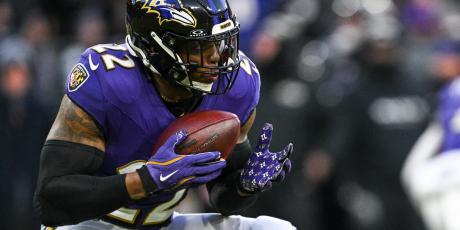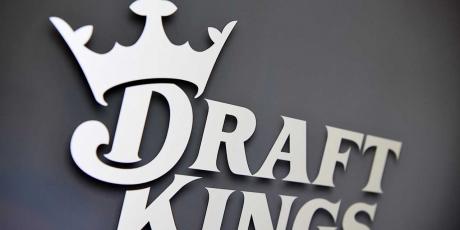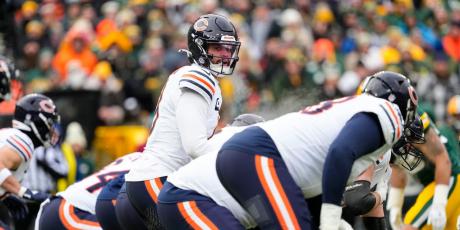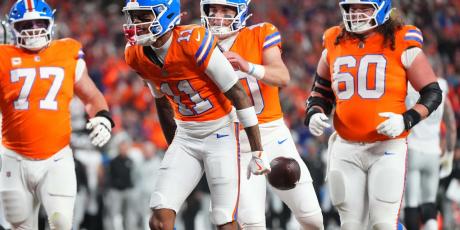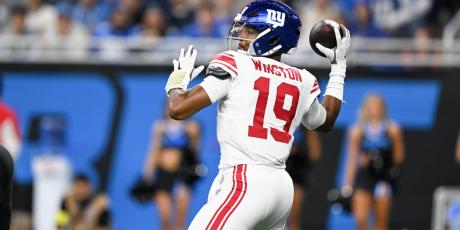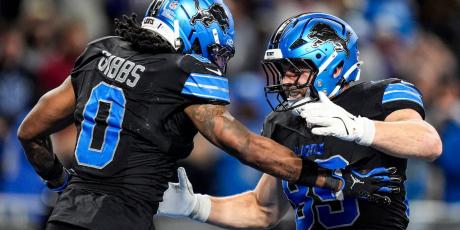5 Running Back Touchdown Regression Candidates

In Part One of this series, I uncovered six quarterback touchdown regression candidates and re-introduced Red Zone EV, a metric designed to quantify how many points a player should score from red zone touchdowns based on the starting field position of every red zone opportunity. For running backs, predicting red zone production can be especially frustrating since they are compiling touches both on the ground and through the air -- methods of moving the ball that result in very different expectations. Since all red zone touches aren’t created equally, we can use regression analysis not just for opportunities (rush attempts and targets) inside the 20-yard line, but inside the 10 as well.
Calculating Red Zone EV for running backs is a little tricky, though, since rushing attempts and receiving targets do not have the same touchdown expectation, and neither do a running back's targets compared to that of a wide receiver or tight end.
More Touchdown Regression Candidates: QB | WR | TE
The following table lists the expected value for all running back red zone opportunities:
| Rush Attempts | Running Back Targets | |||
|---|---|---|---|---|
| Starting Yard Line | % Chance of a TD | EV of a Rush Attempt | % Chance of a TD | EV of a Target |
| 20-16 | 2.4% | 0.14 | 5.6% | 0.34 |
| 15-11 | 5.6% | 0.34 | 12.4% | 0.74 |
| 10-6 | 10.6% | 0.64 | 23.9% | 1.43 |
| 5-1 | 38.8% | 2.33 | 46.2% | 2.77 |
After compiling every red zone opportunity for every running back in the league from 2016, I calculated each back’s Red Zone EV and compared that number to the actual points that they generated from red zone touchdowns. The differential in those numbers will serve as an indicator for running backs that scored more often or less often than they should have in the red zone based on where each play started.
Negative Touchdown Regression Candidates
League Average Red Zone Touchdown Rate - 18.7% of touches
League Average Touchdown Rate from Inside 10-Yard Line - 31.3% of touches
LeSean McCoy, Bills
2016 Red Zone Touchdown Rate - 26.7%; Career - 16.3%
2016 Touchdown Rate Inside 10-Yard Line - 33.3%; Career - 26.1%
Red Zone EV - 46.3; Actual Points From Red Zone Touchdowns - 72
No running back scored further above expectation last year than LeSean McCoy, who was expected to score 7.7 red zone touchdowns, but found the end zone 12 times from inside the 20. With a red zone touchdown rate more than 10 points above his career average, Shady also exceeded that number by more than any back with at least 25 red zone opportunities last year.
Considering that year-to-year red zone scoring rates for running backs have a correlation of just .06 and McCoy has been one of the most inconsistent backs in the league in that respect, owners should be wary about expecting another huge touchdown season from the Bills back, even with Mike Gillislee out of the way.
Ezekiel Elliott, Cowboys
2016 Red Zone Touchdown Rate - 28.6%
2016 Touchdown Rate Inside 10-Yard Line - 38.5%
Red Zone EV - 46.7; Actual Points From Red Zone Touchdowns - 72
In his rookie campaign, Ezekiel Elliott was one of the most efficient running backs inside the red zone, and was especially effective inside the opponent's 10, but history suggests that Zeke may have a hard time keeping up the pace of his first 42 career red zone opportunities. Since 2012, 38 running backs have seen at least 50 opportunities inside the 10-yard line and only David Johnson has maintained a touchdown rate above 35%, while no running back with at least 75 such opportunities has a scoring rate over 33%.
There’s additional concern surrounding the possible regression of the Dallas offense as a whole. In 2016, the Cowboys ran more plays than any other team in game-neutral situations (score within a touchdown either way), while being just the 13th team in the last five seasons to turn the ball over 15 times or less. Turnovers have a year-to-year correlation of just .11 -- evidenced by the fact that the teams with 15 or fewer turnovers prior to 2016 have averaged 20 the following season -- meaning that turnovers are a number that largely regresses to the league mean. Should Dallas’ turnovers climb in 2017, not only will the Cowboys and Zeke see fewer red zone trips, but because they were in so many close games, the positive game scripts that Elliott benefited from in so many wins could dwindle.
Continue reading for one more negative regression candidate and two more positive regression candidates...

- All Premium Content
- The most Accurate Rankings Since 2010
- Expert Draft Picks w/DraftHero
- Highest Scoring Lineup + Top Available Players w/LeagueSync
- ...and much much more

